American Pickup
Ongoing
I’ve been obsessed with cars and trucks since I was a child. One of my first books was a picture booked called simply TRUCK that still gives me a synesthetic response every time I look at it. The personal truck is a cornerstone of the American myth of self-reliance. It is a mobile monument to toughness, utility, industrialism, and rugged individualism, despite its dependance on a vast, energy-intensive web of materials, fuel and support. Originally devised to haul agricultural products to marketplaces, they served (and still serve) as a bridge between the labor of farming and consumer society. Their use has expanded through marketing and advertising to signify certain themes of identity, particularly around masculinity. There’s a grunge, a heaviness, and a sacrificial quality to the pickup.
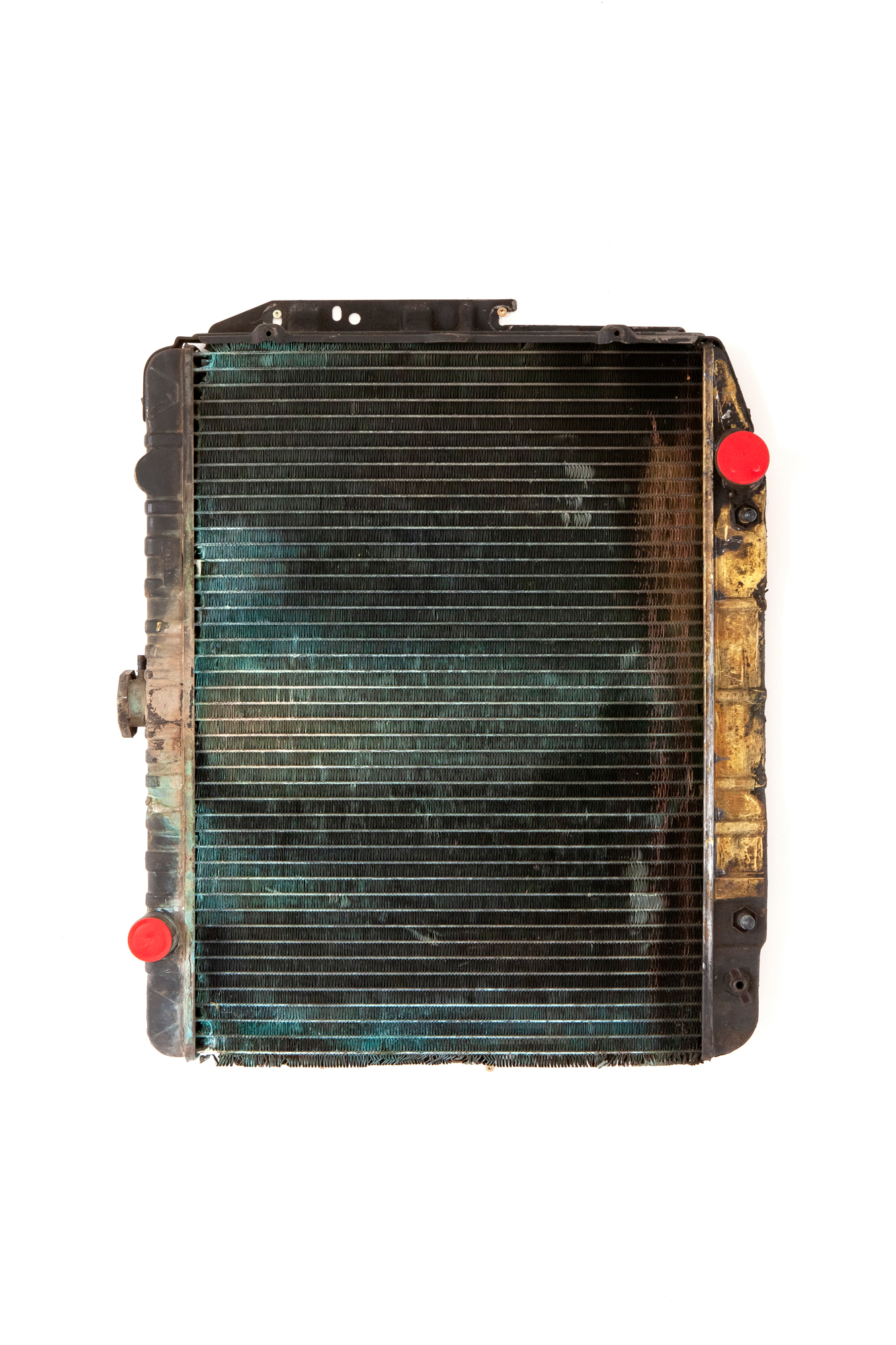


I am not immune. I bought a 1987 Dodge from a junkyard moslty because it looked cool, and I liked how it felt to imagine myself driving it. And if I could turn it into an art project, somehow, then I could hide the fact that I just wanted it. But what began as a simple refresh turned into a complete rebuild. The engine had been horribly neglected, and I slowly and paintsakingly brought it back to life (or so I thought) over the course of a year, climbing fully inside the engine bay at times to get to the issues.
That engine died weeks after I’d finished rebuilding it. I had made some horrible mistake that had locked up the engine entirely. I was dejected, but knew I had to fix it. Later that week, I had a dream that my friend and mechanic guru found me a perfect replacement engine, and that it was blue. The next day, he told me his dad found one that had been sitting around for a decade. I rebuilt that one in his shop, and of course painted it the same blue I had dreamed of. We swapped it in over the course of a weekend, as 107.7 WGNA played a song called “I’ve got a heart like a truck” on repeat, nearly once an hour. When we were done, we put the old engine in the bed, which made me realize that a truck is special being–it can carry its own broken heart around.
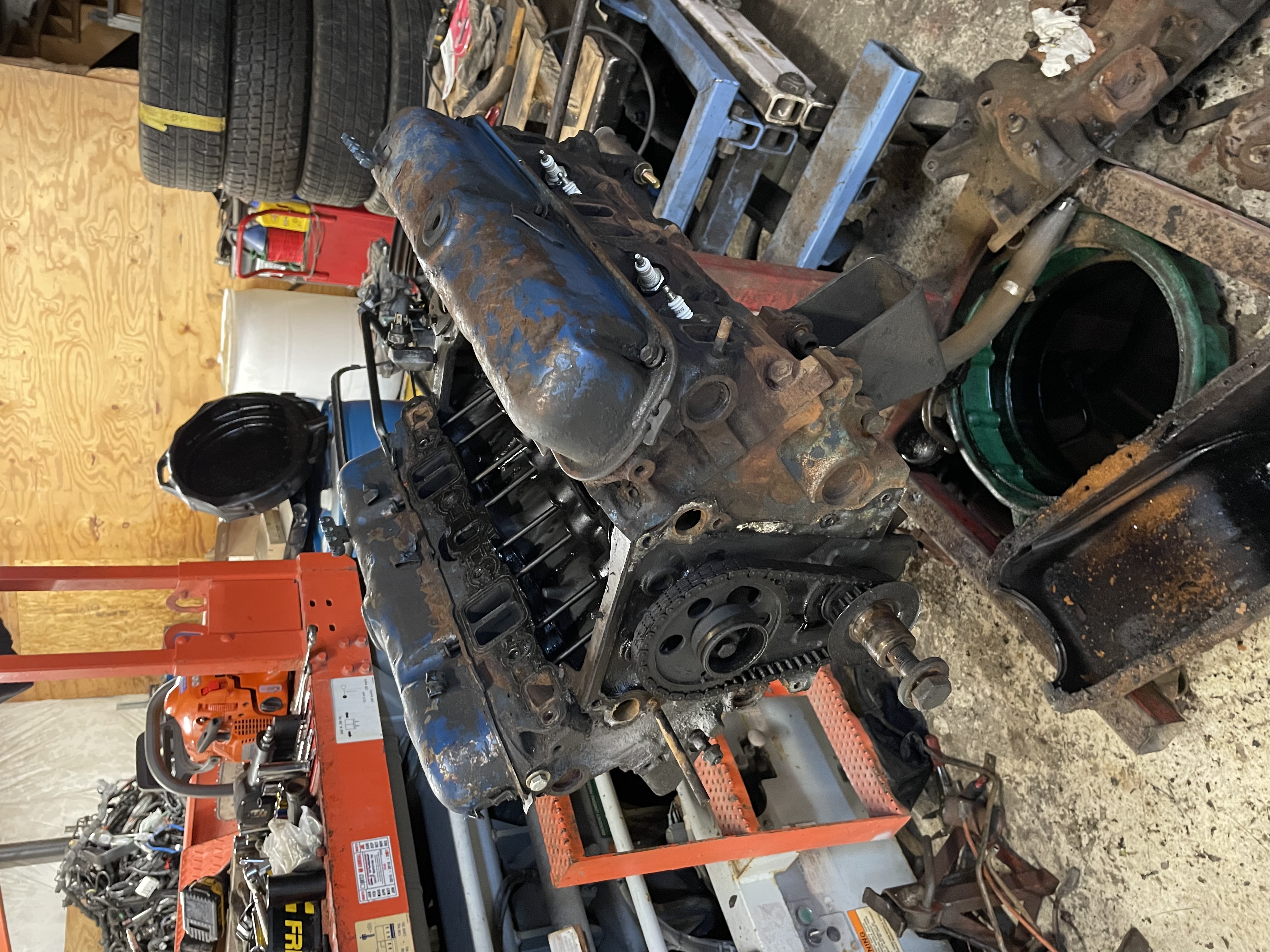
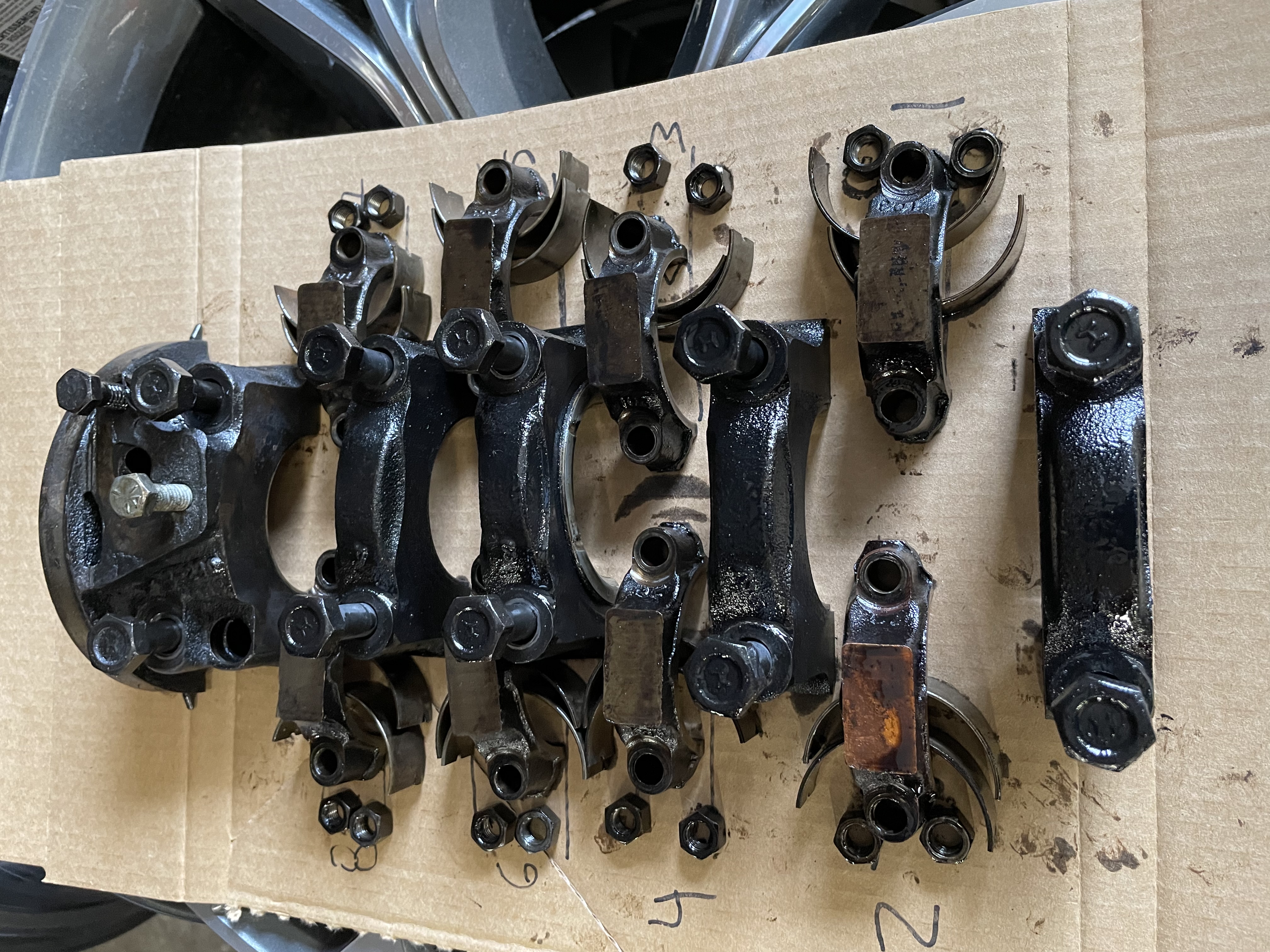
Below are a few entries from my “repair log:”
3/23:
I’ve pulled apart the engine in the truck now. First the intake manifold, all 50 lbs of it, then the valve covers and heads, loosening the ten bolts that hold each one down in the specified pattern, outwards to in. There are so many of these little choreographed bolt tightenings when working on an engine. It’s all filthy, too. This one was leaking oil for years without maintenance, so the oil is thick, solidified. It really does look like a thin, toxic cake.
As I work on the heads and block, scrubbing the old oil off, I get these flashes of the 1980s, when this engine was cast and machined in a giant factory. I chase the threads on all the bolt holes in the head, and the sludge that comes out smells like burned popcorn and butter, acrid but somehow fatty. Dinosaur bones, i guess. The deep time and compression. What does oil do in the ground, if it’s part of the earth’s body? Which humor does it handle? Is it the bile? Or is it like a liquid memory or something like that?

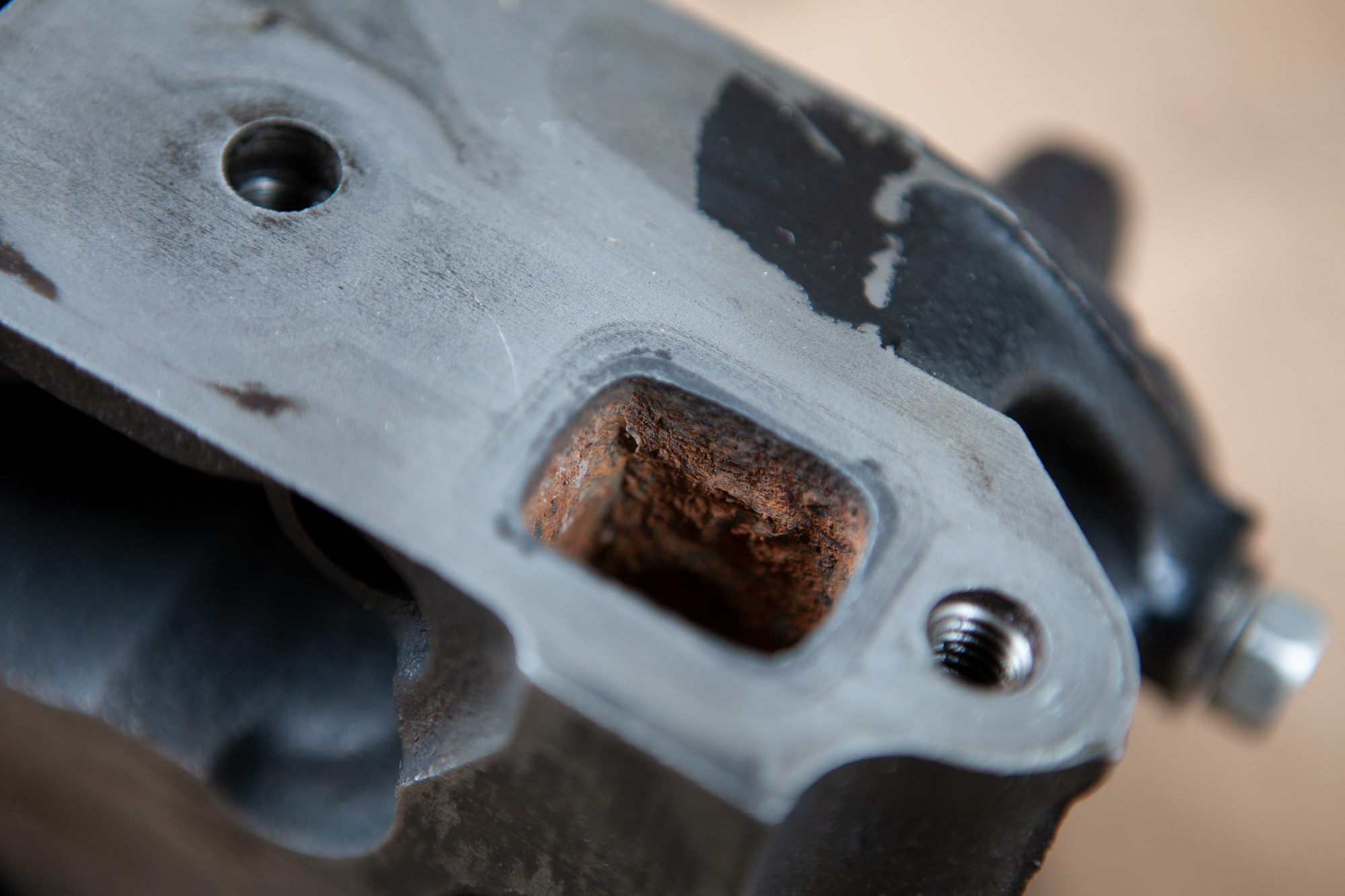
What did the factory smell like? How many people worked on these pieces of cast iron, and how did they read the symbols stamped into it? One of them says “1” and the other say “2”, with Chrysler pentagrams and date codes inside. What did new look like then?
Anyway, my hands ache from gripping the scotch-brite. Scraping the old gaskets and rust off, the slip of citrus degreaser makes it hard to hold with gloves. It reminds me: manufacturing is industrial, but repair is artisanal. Thinking with hands. I hammer out the old galvanized freeze plugs and replace them with brass. Caught them just in time, too, as the interior faces look like the surface of the moon.
I mostly do not share these thoughts with people because I don’t expect them to find it interesting or important in any way. The slow philosophical/sensual understanding of old technology is not something that seems to be valued in today’s world. Or at least not in the ways I find to be most interesting. There are lots of people who would take shallow lessons about mindfulness or, at best, revery from monotonous handiwork, but I think there are deeper channels to plumb.
This metal holds literal energy from almost 50 year ago. It exists in this present moment, always. it has always been now for this machine —it’s heart has been beating off and on at intervals unknown to it, but always in time with itself.

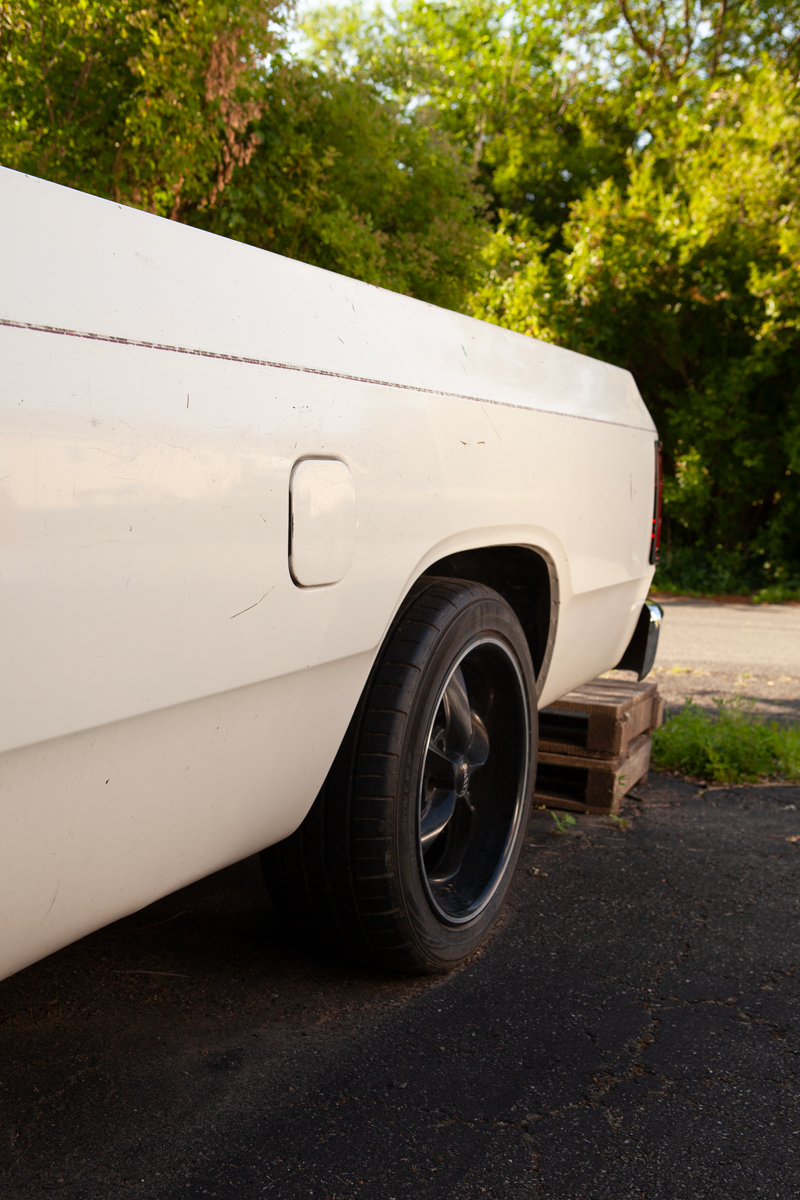
65Sporty says I should check the heads for straightness before putting them back on the block. I used an aluminum ruler, but he says to use one that’s made of steel. If they’re off by .003 inch anywhere, they should get milled flat. Where do you get an accurate steel straight edge? Seems like a machinist thing, and it makes me wonder if these guys on the forums all just exist adjacent to machine shops, and precision tools just float around in their lives, embers left over from the 1960s.
And anyway, how can you tell which is flatter, the engine or the straight edge? Precise measuring devices were made by precise equipment, in turn made by precise measuring devices. I type on this computer because of a straight edge made in the 1700s, etc. There are Youtube wormholes devoted to the histories of how precision was encoded and enhanced over time. If you follow it down far enough, wouldn’t the first bits of precision come from hand gestures? Or would they be derived through elegant use of geometries?
65Sporty welcomes everyone new to the forum by saying “Welcome from the mitten” (Michigan). There’s so much grandfather energy on this board - the warm welcomes, the general lack of organization, the off-topic posts describing hobbies, the longest of which is about sleeping, title “Yaaawwwwn”. It’s only just dawning on me, but perhaps I’m drawn to them, on this truck forum, over all the others, because I’m searching for my grandfather, my mom’s dad Bernie, who was a traveling car parts salesman. He’d probably be interested in the truck. It has decals from the 1987 Indianapolis 500 on it, a race that he frequented. My mom grew up in Indy, and even went to a couple races with him. I have his commemorative beer mugs, with the names of winning drivers and their average speeds, one year per mug.

Bernie might have been at the 1987 500, though maybe they had moved to New Jersey by then. He died in 1990, when I was two. He insisted on calling me Gus, and even bought me a little onesie with big GUS printed on it. We have strikingly similar bodies. The way he holds himself, head canted to one angle, staring at an engine, or sitting on a stump holding his leg. He was beautiful. I wonder about bodies, passed down through genetic and epigenetic traits. Did he contort himself into engine bays in the same ways that I do?
I watched the footage from that year, digitized by ABC and put online, all 4 hours of it. Maybe he’s in the stands there, as the camera pans left, across the teeming thousands watching Mario Andretti command the lead, then lose due to mechanical issues. The helper trucks are all Dodges, red with chrome accents, rushing out with emergency crews. Maybe I could find one, a real one. Though maybe this one was real, too.
